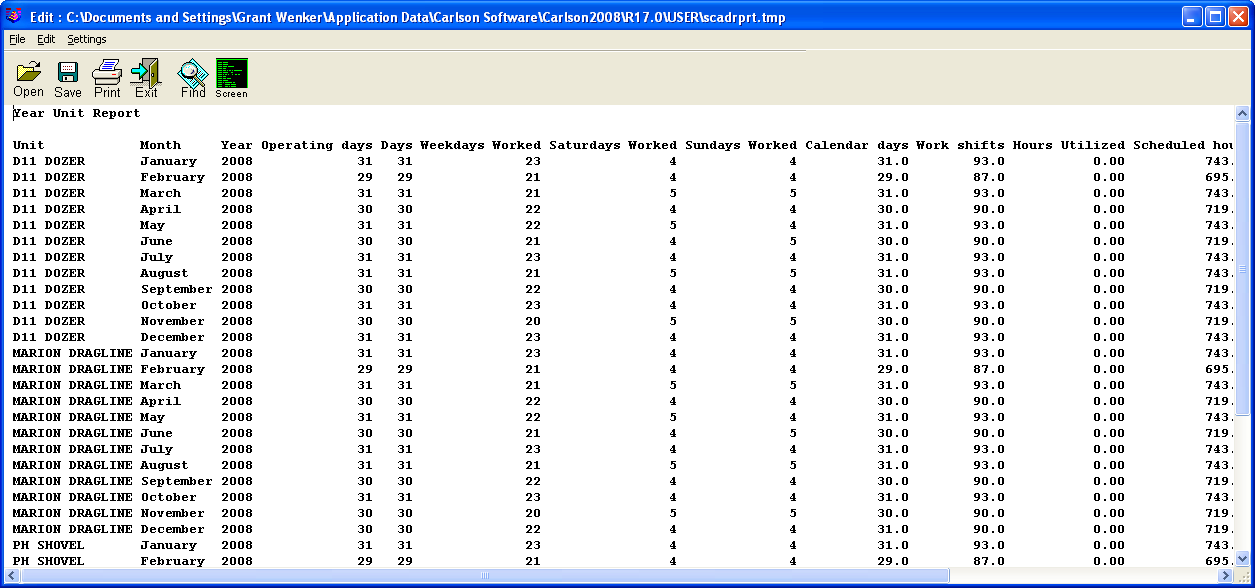








Add and Edit will bring up the next screen for detailed entry.

The Unit of the Production value is defined by a rate unit setting. Equipment may mine either tons, tonnes, CY or CM, Distance and Linear Advance. The difference between distance and linear foot of advance settings is that latter one is a combined length of all pathways/entries mined (underground only), and distance is just distance moved, of a longwall for example.
Enter the Advance Rate/shift or the Advance Rate/hour and the other will be automatically calculated based on the Hours/shift. The Retreat Rate/shift is for Distance and Linear ft of Advance in underground equipment only. The availability value of less than 1.0 will reduce effective production rate of the equipment. 0.94 is a 94% productivity of the full shift.
Underground units may be assigned an Advance minimum and/or maximum height, so that the extra rock will have to be mined or correspondingly unmined coal will be left in the seam if the maximum miner height is less than combined coal and rock parting thicknesses. These settings affect the underground mine timing only.
The maintenance settings provide the ability to schedule a delay for routine or major maintenance/repair of the equipment based on the number of shifts worked. Add in the length of the delay and the number of shifts to determine the frequency.
If operational cost per hour is specified, the total cost will appear in the production report.
The extraction (recovery) factor is used to adjust the amount of
material mined form given area to account for certain technical
limitations of the equipment such as inability to mine out corners,
or not cleaning the top and bottom of ore. This machine will always
use that recovery rate.
Advanced Options:

Under the Advanced options the variation of equipment-related Difficulty Factor with time, depth or bench number may be specified. Resulting from the advanced options, the difficulty factor is a product of coefficients calculated for given date, thickness and bench number. The final difficulty factor used in calculations is a product of location-specific and equipment-specific difficulty factor.
In the Period End Date column, the difficulty for the date is for next, later date, or last one if no later entry exists. For the thickness column the value of difficulty factor between two entries in the table is a linear approximation. The rehandle value is calculated in the same fashion and passed over to the report, not being used in calculations, but can be used in the report in equations to calculate the total amount mined. The difficulty will modify the rate, and the rehandle is reported. These are not necessarily always the same, linear factors. The Bench Specific Difficulty will be used for surface equipment mining on that bench number, and use that difficulty factor to change the rate of the equipment.
Selecting Edit All from the first screen brings up this editor where all equipment may be viewed and edited. Both the first screen and this one have the import and export buttons.



The Equipment Calendar allows for entity production down time. By default, entities are working every day, every shift. Entities include equipment, crews, pits and panels. Days and shifts defined in this calendar as down-time are taken into account during scheduling routines. The assignment pattern is very flexible: it works for a particular crew or all crews, for a particular shift or the whole day and allows replication of the defined behavior over period of time as desired. The calendar will clean out, or purge a schedule for a crew which is no longer present.










The Reserved Attribute Names are defined in a little more detail
here:



Pull-Down Menu Location: Reserves/Timing in Surface
Mining and Underground in Underground Mining
Keyboard Command: stime_project or utime_project
| Converted from CHM to HTML with chm2web Standard 2.85 (unicode) |